While most mares foal safely, foaling is not without its risks and losing a mare at foaling or shortly after can leave you with a big problem. It is not something that we generally want to think about but it is wise to have an understanding of what to do in the unfortunate event you have to deal with the scenario. You may even be dealing with a foal that has been rejected by the mare or a mare with too little milk to successfully feed her foal.
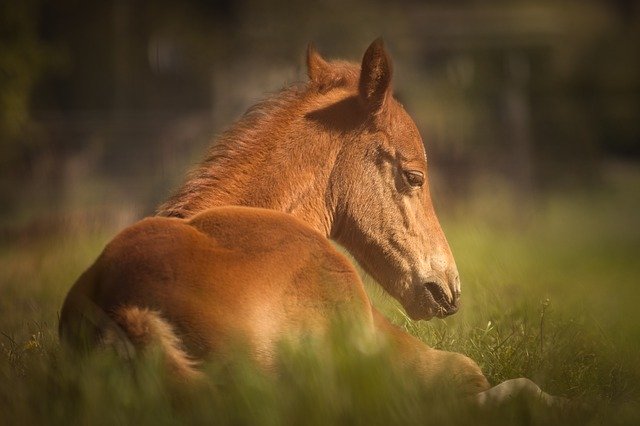
Orphaned foals are very time consuming and expensive to care for, the requirements vary as to the stage at which the foal is orphaned. While fostering the orphan onto another mare is the preferred method, locating a suitable mare and getting the mare to accept the foal or inducing milk production can take time. So some supplementary feeding will still be required.
There is a considerable investment in 24 hour care if hand rearing is to be carried out. New born foals naturally suckle off the mare about 8 times per hour and whilst it is not quite possible to mimic this it would be likely that feeds would be given initially every 1.5 hours day and night. With feeding intervals increasing as the foal gets older and the volume fed at each feed also increasing.
The Importance of Colostrum
When the mare is lost at foaling, the primary concern is for a foal to receive colostrum to ensure the transfer of antibodies and establish passive immunity. The initial composition of mare’s milk in the form of colostrum is rich in anti bodies and is produced by the mare for the first 36 hours after foaling. If a mare is lost during foaling milk can still be taken from the mare and given to the foal. Additional colostrum can then be supplied for the next 12 hours. There are a number of commercial colostrum replacers available on the market. Many come in a powdered form and it is wise to have some available if you are foaling.
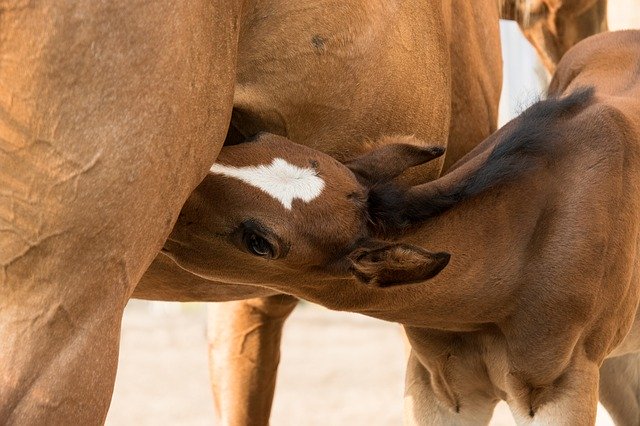
Remember most mares foal between 10 pm and 6 am so you can’t pop to the shop and pick some up if you need it. Coupled with that it’s vital to get the colostrum into the foal within 8 to 12 hours of birth, as this is when it is best absorbed by the gut after this the efficiency of absorption declines and stops by the time the foal is 24 hours old. Alternatively colostrum can be saved and frozen from other mares in the resident herd, this gives the foal a range of antibodies more specific to the local environment on the farm.
Frozen colostrum can last for 12 months in the freezer and should be renewed as and when available. A kind of “stock rotation”, out with the old and in with the new so to speak. Defrosting can be done in tepid water and then heated in warm water, do not put it in boiling water or in the microwave.
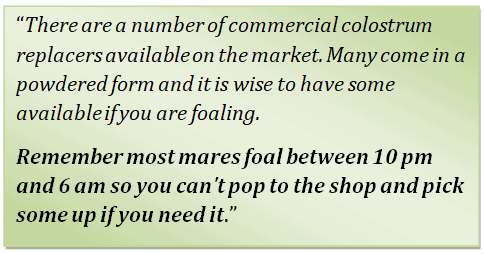
In general, a foal needs approximately 2 to 3 L of good-quality colostrum to increase its immunoglobulin (Ig)G levels to the benchmark of 800 mg/dL. This can be checked by a blood test carried out by the vet but it needs to be taken 8 hours after the ingestion of colostrum to allow for absorption into the bloodstream. If colostrum is not available, then intravenous administration of equine plasma that is high in IgG will help the immunologic status of the foal.
Once the requirements for colostrum have been met then the foal can either be fostered or hand reared.
As already mentioned the investment in time is huge when dealing with an orphaned foal, normally the week-old foal will nurse approximately 5 to 8 times per hour. It is impossible to mimic this feeding pattern in the orphan without a foster mare.
It is usual that at 1 day of age foals should be fed every 1.5 hours, with the number of feedings per day going from 16 on day 1 to 5 by day 15. With the volume fed at each feed increasing as the number of feeds decreases.

Using Milk Replacers
If we look then we can find a number of good milk replacers available on the market. They do however need to be examined carefully as to the ingredients in each and how suitable they are depending on the age of the foal. As the foals ability to digest different nutrients changes during the first few months so does the suitability of different formulations of milk replacer. Scour in foals is common when being fed milk replacer and can often be attributed to the foal’s inability to digest some ingredients in the formulation.
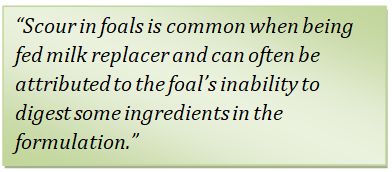
Initially products containing sugars such as, maltodextrins, corn syrups, oligosaccharides, and glucose polymers are not recommended for foals less than 3 weeks of age because of the low level in the foal’s digestive system of maltase, the enzyme needed to digest these disaccharides. As the young foals ability to digest fibre is poor, replacers with a Crude Fibre of 1.0% or higher can cause scour in orphans less than one month old.
From birth to 3 months old the main requirements of the foal are for protein and fat, and minerals such as calcium and phosphorous, all of which are adequately supplied by the mare’s milk. Milk replacers should have at least 20% protein and 15% fat; however, 22% protein and 20% fat is even better. Requirements for Ca, Cu, K, Mg, Na, P, S, and Zn are vital. Most formulations either meet or exceed the requirements for these elements. Iron, zinc, copper and manganese are usually met from stores in the foals liver that were built up intrauterine.
The foal should be consuming about 20 to 25% of its body weight on a daily basis and this should be split into feeds and spaced out from 1.5 hours initially to about 6 hours by the time the foal is 1 month of age. Bear in mind that foals can grow by 1kg a day so weighing your foal regularly can help to plan the ration more accurately.
Switching to Solid Food.
The sooner you get an orphan foal to start accepting solid feed, the better. Milk-replacer pellets can be offered from about a week old, just a hand full at a time.
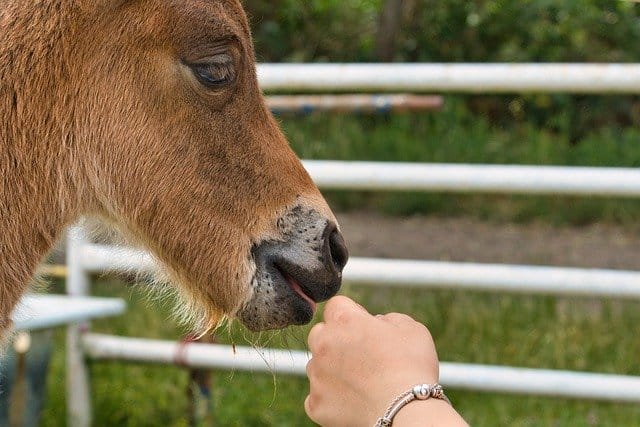
Gradually increase this too two to three pounds of milk-replacer pellets. Once at this level some commercial creep feed formulated for nursing foals can be introduced.
By the time the orphan is eating 2-2.5 kg of milk replacer pellets or creep feed a day, they can be weaned off the milk, I have seen this done as early as nine weeks but generally would expect about 3 months to be more likely. Most orphans can be completely weaned by the age of four months, after which they can be treated like any other weanling.

If feeding milk replacer, rather than fostering your orphan, it is important for the foal to have equine company of some sort. Most foals learn from their dam or peers and not having this education can lead to behavioural issues at a later stage. If you can have them with a quiet pony, that will accept the foal or a non nursing mare, that’s great. As long as it is safe you can let them in with a group of similar age foals and continue to feed them. I have even been lucky and bonded them with a very maternal mare and her own foal, although the mare never allowed the orphan to suckle she did give it protection and showed it boundaries when it got cheeky.
While it is always difficult to lose a mare its easier if you have some idea as to how to cope with the orphaned foal and let’s hope that for most of us this is a theoretical situation that we never have to face.
